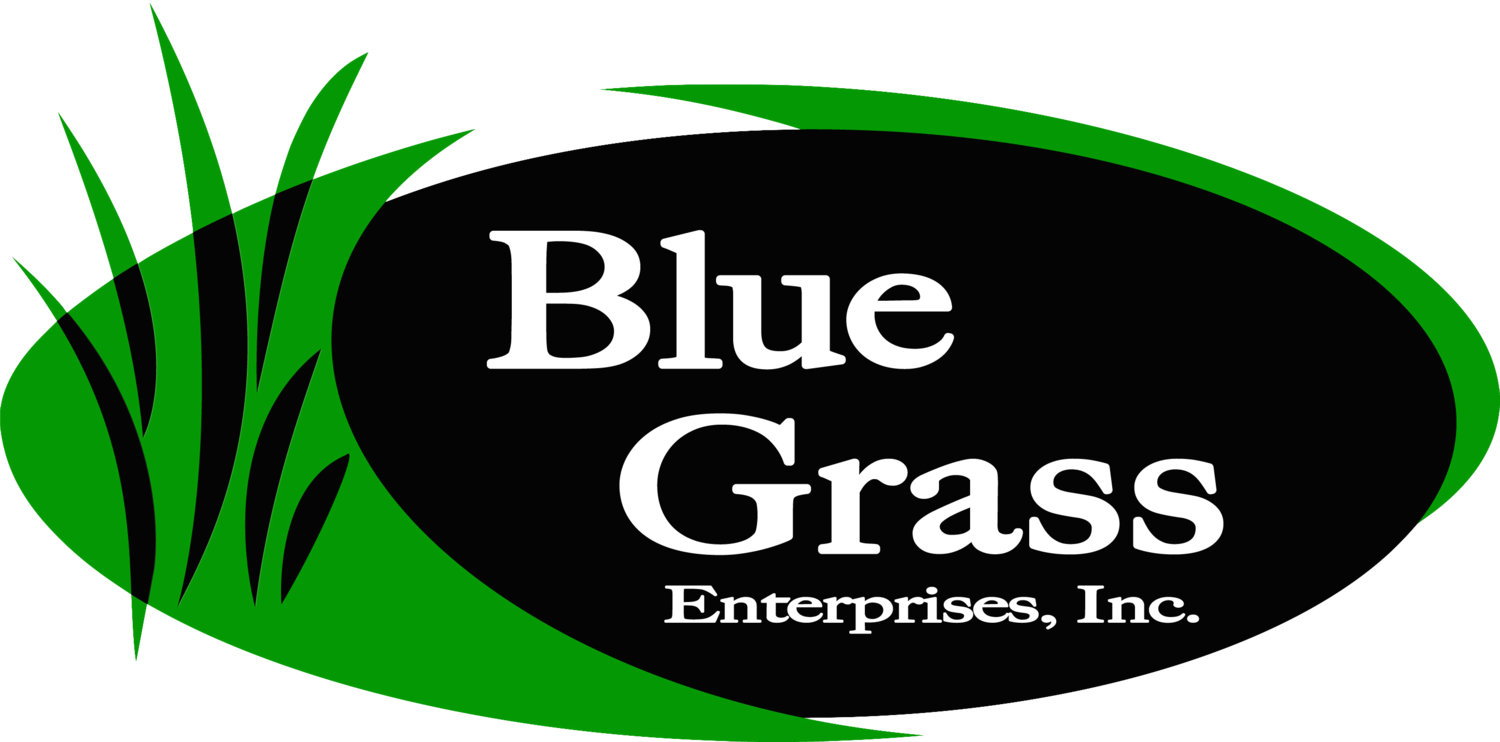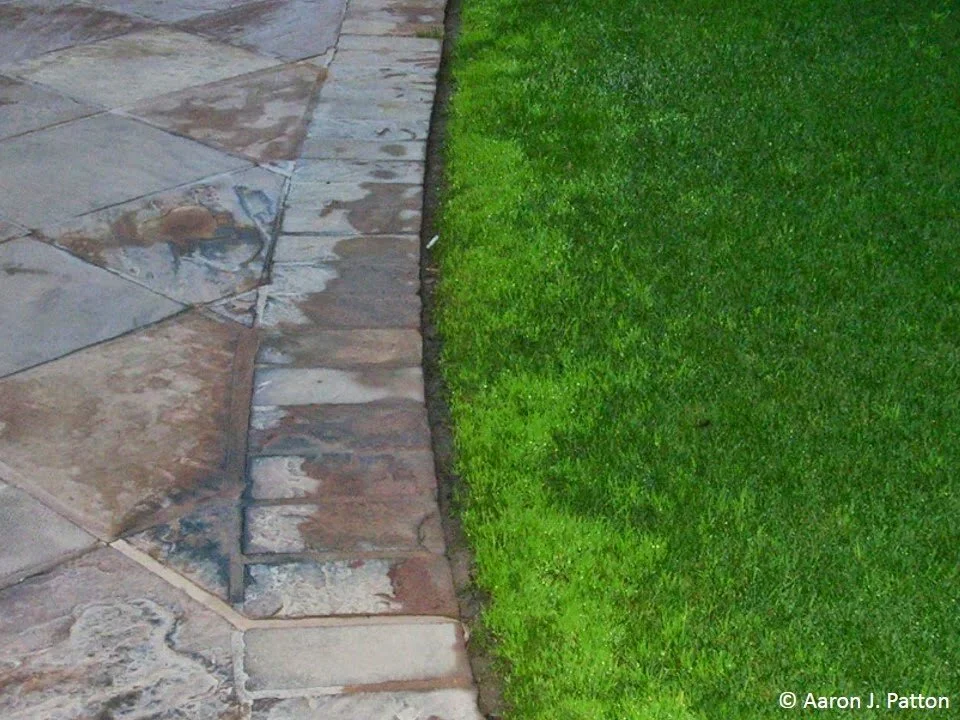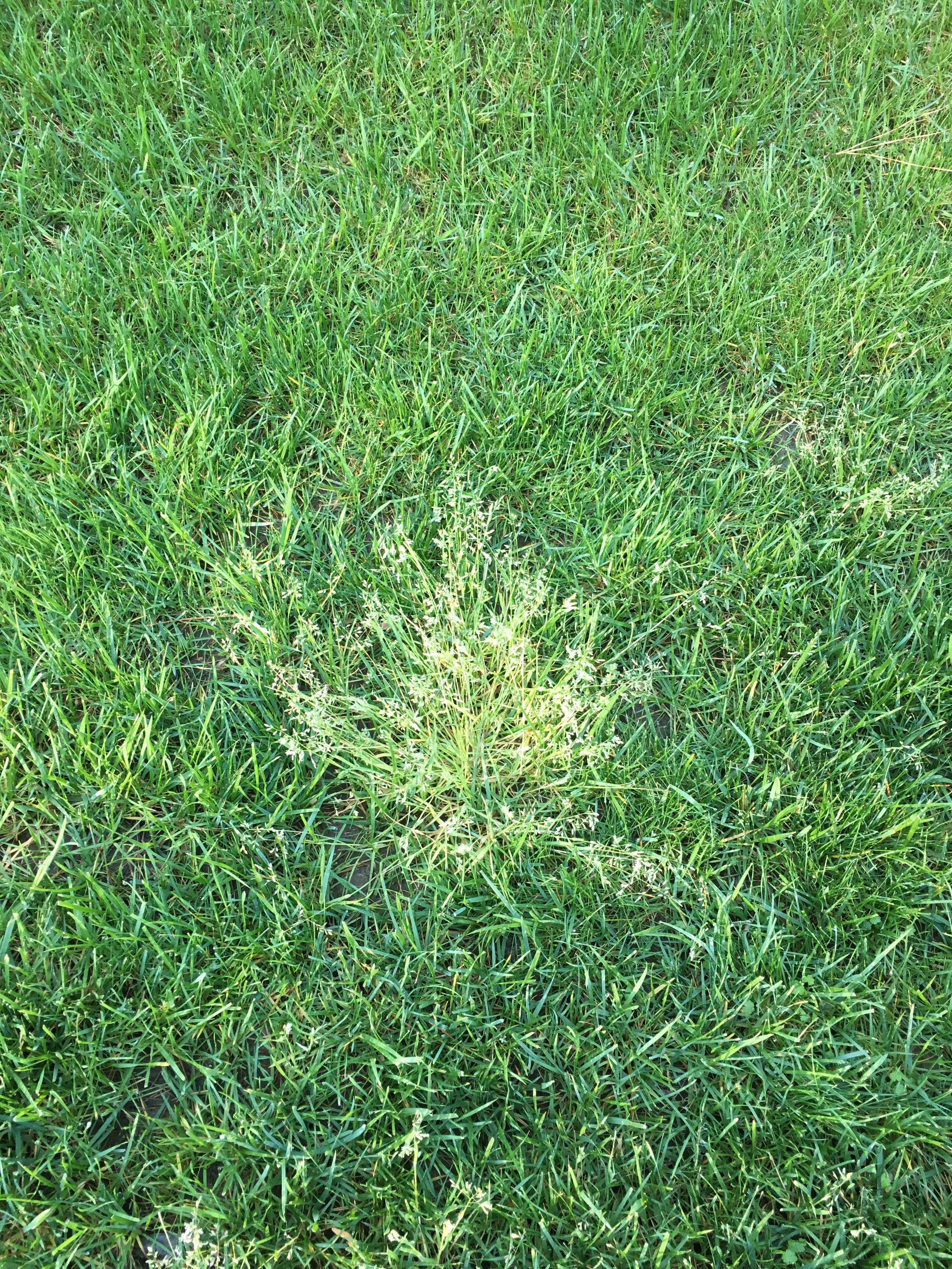Spring Has Sprung! Sort of…
As crazy as it sounds, this spring already has us thinking about a unique summer problem that will be rearing its ugly head in a couple of months: Poa annua.
What is Poa Annua?
Poa annua (aka, annual bluegrass) is a common, invasive grass throughout the northern US. As a native bluegrass, you might think people would be thrilled to have a native plant pop up on their lawn from animal droppings and the like.
Haha! Think again.
Poa annua (often shortened to just “poa”) can be a real pain in the you-know-what.
Why is it a pain, you might ask? Unlike other bluegrasses, most cultivars of poa are winter annuals, which means they germinate in the late summer/early fall (when soil temps come back down 70°), mature through the fall, overwinter, go to seed in the VERY early spring, and die in the heat of summer. The main reason this life cycle is so problematic is it leaves homeowners or groundskeepers with mysterious dead spots which appear in the heat of summer as poa naturally dies off. These holes are often mistaken for diseases. The human-in-question may then treat for diseases for several seasons before figuring out they have spent lots of time and money achieving ineffective results (and potentially building fungicide-resistant bacteria strains along the way - yuck).
So if this pesky invader is so unsightly in the summer, why am I writing about it in the spring? Because spring is when it is easiest to identify for many people! (You see? There IS a method to the madness… sometimes.)
A prolific seeder, poa “goes to see” (aka puts on a seed head) much earlier in the season than surrounding desirable grasses Photo: Aaron Patton
What Should I Watch For?
Poa grows in clumps which are noticeably light green compared to most desirable lawn grasses. Additionally, poa goes to seed weeks earlier, and at a much shorter height than traditional lawn grasses, making them very easy to pinpoint around the month of May in Iowa. Be sure to look for poa in wet or compacted ground, or right up by a road or driveway.
How Do I Control Poa?
Short lingual. Photo: Aaron Patton
That is a great question. Any sports field manager or golf course superintendent can tell you, the battle with poa can feel never-ending because there is not (to date) a great selective control for killing only the poa annua while leaving the surrounding desirable grasses unscathed. If you have small clumps, we would recommend a non-selective herbicide and then feeding the desirable grass to encourage it to fill in. For larger clumps, spray the area, cut it out, and patch the spot with sod; this method has the added benefit of “smothering” any residual poa seeds.
Keep your lawn 3” or taller during the years you are working to eliminate poa. Poa will almost always outperform the competition in a “who can be healthy and short” competition. Allowing your lawn to get longer helps to deprive sunlight to the lower-growing poa plants.
Light green color and early seed heads Photo: Aaron Patton
Be sure to irrigate deeply and infrequently, thereby rewarding plants with longer root systems with increased access to moisture at deeper levels, while allowing the surface to dry out a bit so poa is out of its comfort zone.
Because poa annua is a prolific seed producer (some plants can produce more than 360 seeds in a single season), you will need to be intentional with pre-emergents in the years you are trying to “get ahead” of any poa infestations. We would recommend applying either of our Step 2 products in the spring (at the regular time) and then applying the 20-0-5 w/ Dimension again in August, to offer full-season seed germination coverage. You would want to do this for at least two seasons in a row as you encourage desirable grasses to fill in areas where poa has been sprayed out. Improving soil structure and alleviating compaction issues with aerations during this time is a must.
It is important to note crabgrass pre-emergents will also stop desirable grass seed from germinating, so in the years you are focusing on poa, don’t bother putting down grass seed to patch in any holes; you will need to use sod instead.






